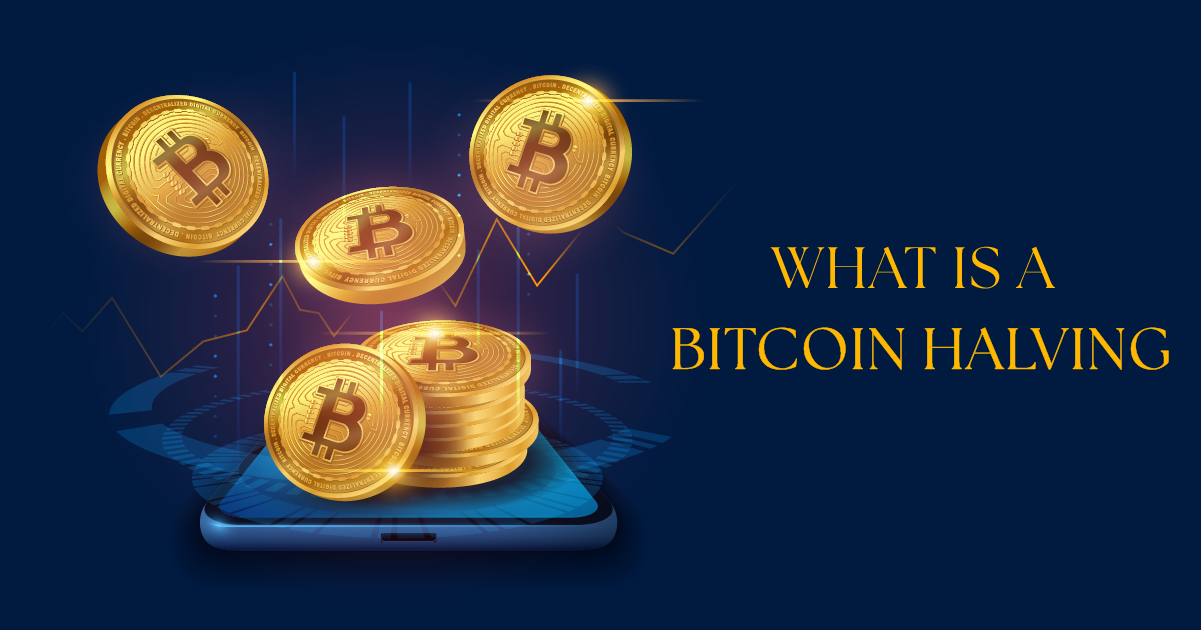
The Clockwork of Scarcity: Demystifying Bitcoin Halving
27th February 2024 | 4 minutes read
In the ever-evolving landscape of cryptocurrencies, one phenomenon stands out as a pivotal event influencing the very essence of digital gold – Bitcoin Halving. As a core element of Bitcoin’s design, halving plays a crucial role in controlling its supply and, consequently, its value. Join us as we delve into the intricacies of Bitcoin Halving, uncovering its significance, mechanics, and impact on the world’s premier cryptocurrency.
The Genesis of Bitcoin Halving
Bitcoin Halving is ingrained in the protocol of the world’s first cryptocurrency as a mechanism to control its supply. The concept was introduced by Satoshi Nakamoto, the elusive creator of Bitcoin, to emulate the scarcity of precious metals like gold.
What is Bitcoin Halving?
Bitcoin Halving is a predetermined event that occurs approximately every four years, or after every 210,000 blocks mined. During this event, the reward that miners receive for validating transactions and adding them to the blockchain is reduced by half. This process is hard-coded into the Bitcoin protocol to limit the overall supply of Bitcoin to 21 million, making it a deflationary asset.
- The Mechanics of Bitcoin Halving
- Understanding how Bitcoin Halving works requires an insight into the role of miners and the issuance of new bitcoins.
- Mining and Block Validation:
- Miners compete to solve complex mathematical problems to validate transactions and create new blocks.
- The first miner to solve the problem gets to add a new block to the blockchain and is rewarded with bitcoins.
Halving Event:
Every 210,000 blocks, the reward for miners is halved.
Initially set at 50 bitcoins, it became 25 in the first halving, 12.5 in the second, and so on.
Historical Bitcoin Halving Events
Explore the timeline of Bitcoin Halving events and their impact on the cryptocurrency ecosystem.
First Halving (2012):
Block reward reduced from 50 to 25 bitcoins.
Marked the beginning of Bitcoin’s journey into mainstream awareness.
Second Halving (2016):
Block reward reduced from 25 to 12.5 bitcoins.
Coincided with increased institutional interest in Bitcoin.
Third Halving (2020):
Block reward reduced from 12.5 to 6.25 bitcoins.
Witnessed a surge in Bitcoin’s price and increased institutional adoption.
Fourth Halving (2024):
The fourth is scheduled for April 2024. This is extremely bullish for cryptocurrencies because historically, halving events have sparked “boom cycles” in the crypto market.
Theoretically, the reduced supply of new bitcoins can lead to an increase in demand, which should drive up the price.
Impact on Bitcoin’s Price and Market Dynamics
Bitcoin Halving is often associated with significant price movements and shifts in market dynamics.
- Supply and Demand Dynamics:
- Reduced supply due to halving can create a supply-demand imbalance.
- Historically, this has led to upward price pressure.
- Market Sentiment and Speculation:
- Halving events are anticipated and can lead to speculative behavior.
- Positive sentiment often precedes and follows halving events.
Bitcoin Halving and the Future
As we look to the future, Bitcoin Halving will continue to be a defining aspect of the cryptocurrency’s narrative.
Scarcity and Digital Gold Narrative:
- Bitcoin’s limited supply reinforces its narrative as digital gold.
- Investors view it as a hedge against inflation and economic uncertainties.
Maturation of the Ecosystem:
- Halving events contribute to the maturation of the cryptocurrency ecosystem.
- Increased awareness and adoption follow each halving cycle.
Navigating the Halving Cycles
Bitcoin Halving is a scheduled event designed to ensure the scarcity and value proposition of Bitcoin. Understanding its role in the protocol is crucial for investors, enthusiasts, and anyone navigating the dynamic world of cryptocurrencies.